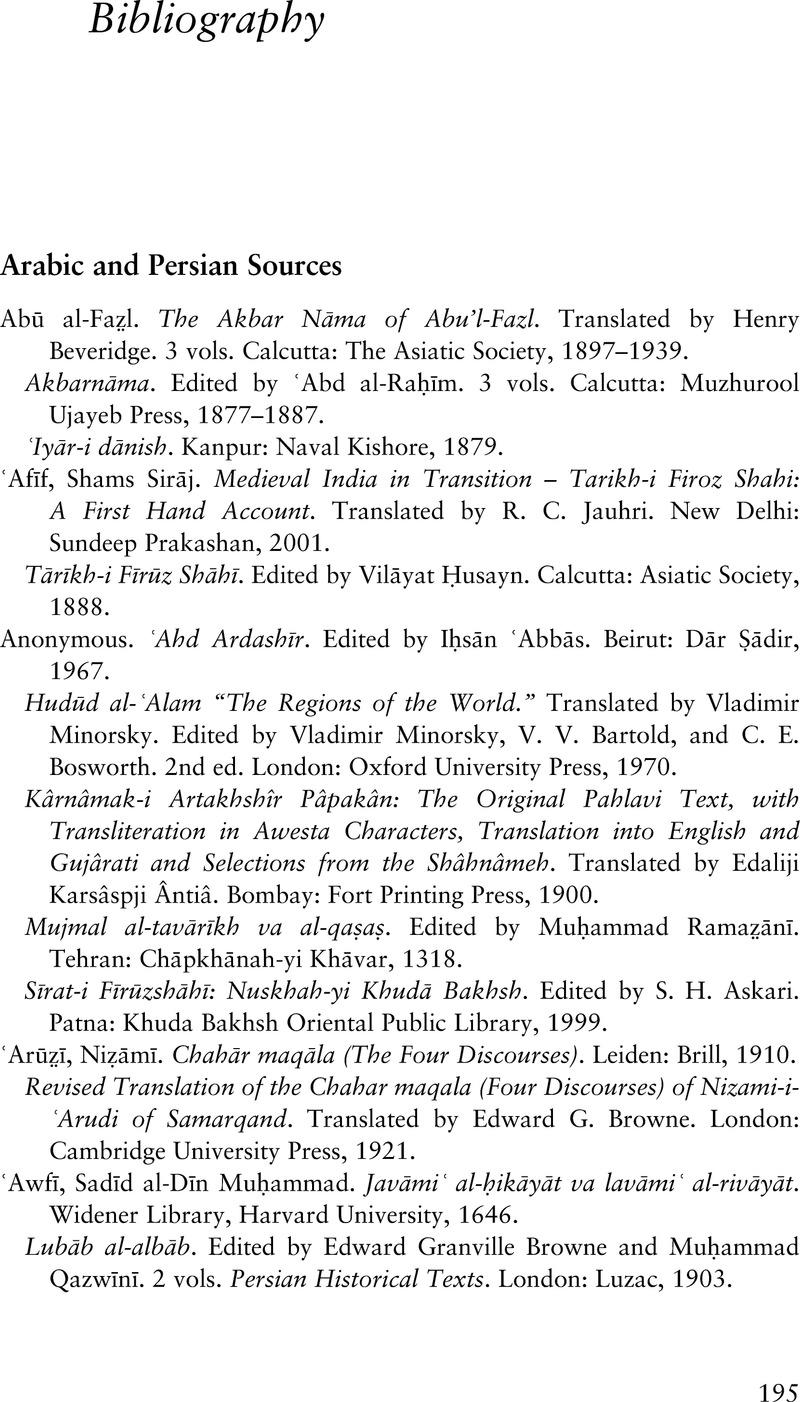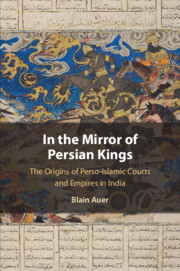Book contents
- In the Mirror of Persian Kings
- In the Mirror of Persian Kings
- Copyright page
- Dedication
- Contents
- Figures and Maps
- Maps
- Preface: In the Mirror of Persian Kings in India
- Abbreviations
- A Note on Transliteration
- 1 The History of Persian Kingship and Persianization in South Asia
- 2 Kings in History
- 3 Warrior King
- 4 Theory and Application of Persianate Political Ethics in India
- 5 The Pen, the Sword, and the Vizier
- Conclusion
- Bibliography
- Index
- References
Bibliography
Published online by Cambridge University Press: 17 April 2021
- In the Mirror of Persian Kings
- In the Mirror of Persian Kings
- Copyright page
- Dedication
- Contents
- Figures and Maps
- Maps
- Preface: In the Mirror of Persian Kings in India
- Abbreviations
- A Note on Transliteration
- 1 The History of Persian Kingship and Persianization in South Asia
- 2 Kings in History
- 3 Warrior King
- 4 Theory and Application of Persianate Political Ethics in India
- 5 The Pen, the Sword, and the Vizier
- Conclusion
- Bibliography
- Index
- References
Summary

- Type
- Chapter
- Information
- In the Mirror of Persian KingsThe Origins of Perso-Islamic Courts and Empires in India, pp. 195 - 218Publisher: Cambridge University PressPrint publication year: 2021



